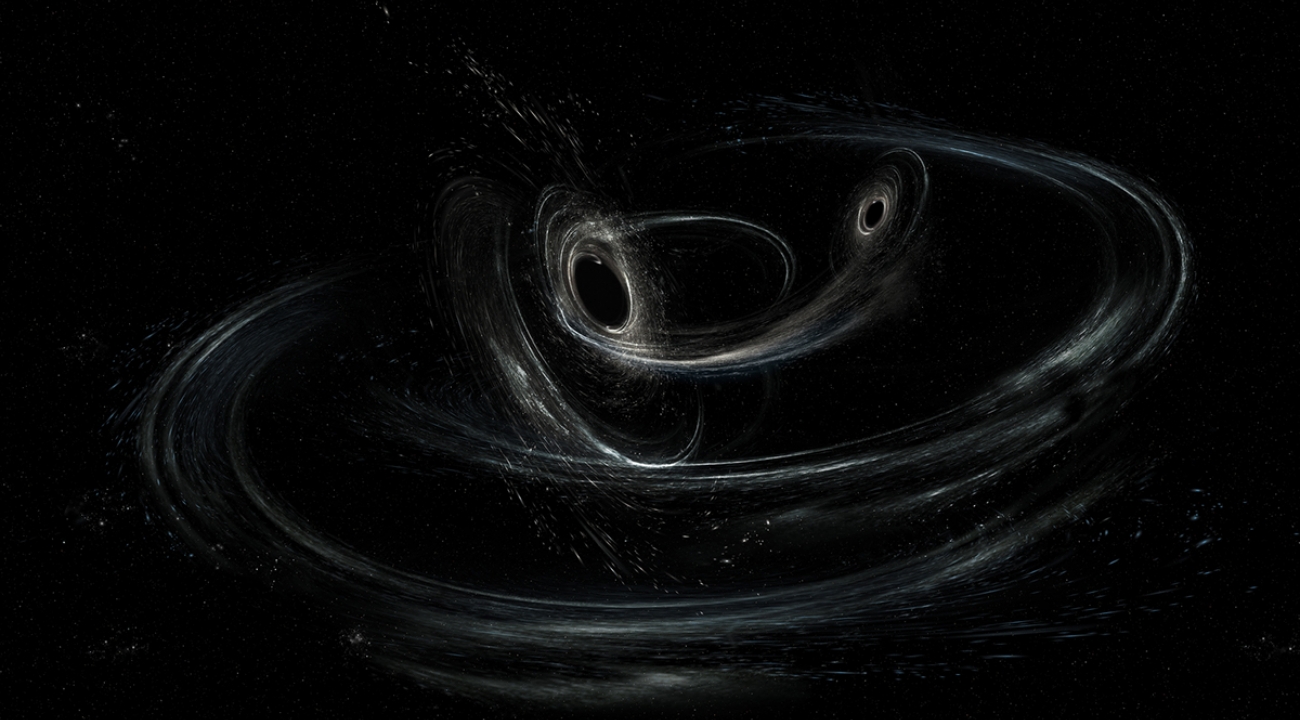
An artist's conception of two black holes orbiting each other. The Laser Interferometer Gravitational-Wave Observatory (LIGO) has captured the gravitational disruption arising from pairs of black holes merging into one. (Image courtesy of the LIGO Scientific Collaboration.)
A little more than a hundred years ago, Albert Einstein worked out a consequence of his new theory of gravity: Much like waves traveling through water, ripples can undulate through space and time, distorting the fabric of the universe itself.
Today, Rainer Weiss, Barry C. Barish and Kip S. Thorne were awarded the 2017 Nobel Prize in Physics for decades of work that culminated in the detection of gravitational waves in 2015—and several times since—by the Laser Interferometer Gravitational-Wave Observatory (LIGO).
Emily and Chris sat down with UMD physics professor Peter Shawhan, a member of the LIGO collaboration, to learn more about gravitational waves and hear a sliver of the story behind this year's Nobel Prize.
This episode of Relatively Certain was produced by Chris Cesare and Emily Edwards. It features music by Dave Depper. Relatively Certain is a production of the Joint Quantum Institute, a research partnership between the University of Maryland and the National Institute of Standards and Technology, and you can find it on iTunes, Google Play or Soundcloud.